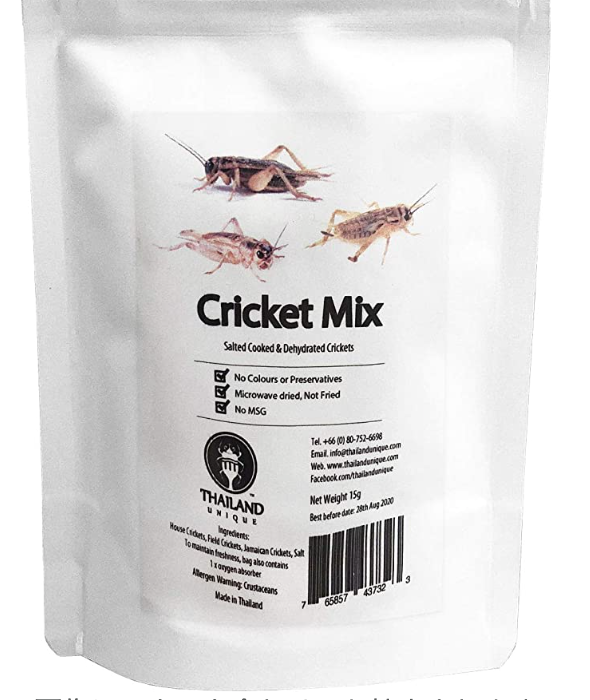
Today’s special: an entrée of insects?
For millenia, Awaji Island has been known as a supplier of the highest quality foods, appointed as Miketsu no kuni, one of only 3 regions that supplied ingredients to the Imperial Court. Still today, island residents enjoy some of the finest foods available. However, food self sufficiency in Japan is less than 50%. Most foods are imported from abroad. Due to the rapid growth of the world population, global food shortages are at serious levels as can be seen in the case of wheat supplies which have been decimated by the Russian invasion of Ukraine. The same trend is reported, especially in several developing countries in Africa. Under these circumstances, people are turning to plants as a new source of protein to replace livestock, as reported previously on this HP (July, 2022). In addition, insects are now causing a buzz as a potential food source. Let’s explore this current trend.
The recent issue of the science journal Nature includes a report about insects as a source of protein in France(How France became the unlikely home of the insect farming industry, (2023) Feb.02 issue). According to this report, in Europe, France is an industry leader in the insect protein production field. One of the major companies, Yensect, breeds beetles to produce protein powder which is used as livestock feed. Many businesses have started in the USA and Germany to produce insect protein as well. What’s the situation in Japan?
In Japan, for a long time insects like grasshoppers and silkworm larvae have been eaten as a source of protein. Grasshoppers are harmful to rice cultivation and must be removed. More than 100 years ago, half of all Japanese people ate grasshoppers as a staple food. Before the Meiji era introduced the western life style of eating beef and pork, Buddism did not allow eating those animals, so protein sources were limited to fish. Thus, insects became an important choice as a source of protein, especially within Japan’s inland areas far from the sea like Ina Valley in Nagano prefecture and several areas in Tohoku.

Shyoichi Uchiyama, a researcher of this topic, tells the history of insects as food and suggests ways to cook and consume a variety of insects in his book (How delicious insect foods are! (Japanese), (2019) Shinchyo book 798). For example, grasshoppers were cleansed by being kept with no feed for two or three days, then often baked then seasoned with soy source and sugar. The descriptions of this Japanese cuisine in Uchiyama’s book might shed light on how easily insect dishes can be prepared.
However, grasshoppers are difficult to feed artificially, making them difficult to raise as a staple food at present. Instead of grasshoppers, crickets are now attracting the most attention as a source of insect protein. Tokushima University is one of the hubs of this movement. The former president of the university and emeritus professor, Dr. Sumihare Noji, used to be a basic researcher of molecular mechanisms of insect development, and has used crickets as a model organism for his study. His research has shown that crickets have several merits as a source of protein since they are omnivorous and only take 35 days to reach fulll size, which is much shorter than livestock animals. Therefore, artificial feeding of crickets is easy and economical (Cricket as a food saves the earth. (Japanese), Sumihare Noji, (2021) Shyogakkan Books). Now a venture business corporation at Tokushima University named “glyllus” (the species name of one type of cricket) is producing cricket powder. They have even started to develop a new autonomic cricket feeding machine with a subsidiary of Toyota motor company.
Why else are crickets seen as a hopeful candidate of insect protein? Beside the short maturation period, another important point is the protein content; about 60% of the cricket’s whole body contains protein, compared to about 20% for beef. Livestock production also needs large quantities of water and vast spaces to pasture. This waste of water used for feeding is another sore point for environmentalists. However, by feeding crickets at large scale, these issues can be avoided, making the little creatures an attractive option as our next generation protein resource.


Although several positive points have been raised here, negative opinions dominate SNS against cricket foods. However the evidence against cricket consumption has not been clear so far. One crucial question to answer is whether or not people can find attractive ways to consume insect protein. One of the hints to produce crickets with better taste is the kind of feed used. Yuzu peel (a kind of Japanese lemon) has been shown to be an attractive choice. Currently, the Japanese corporation “Muji” sells chocolate cookies and soysauce senbei using cricket powder. Please try them as a first step to considering the future of insect protein.
